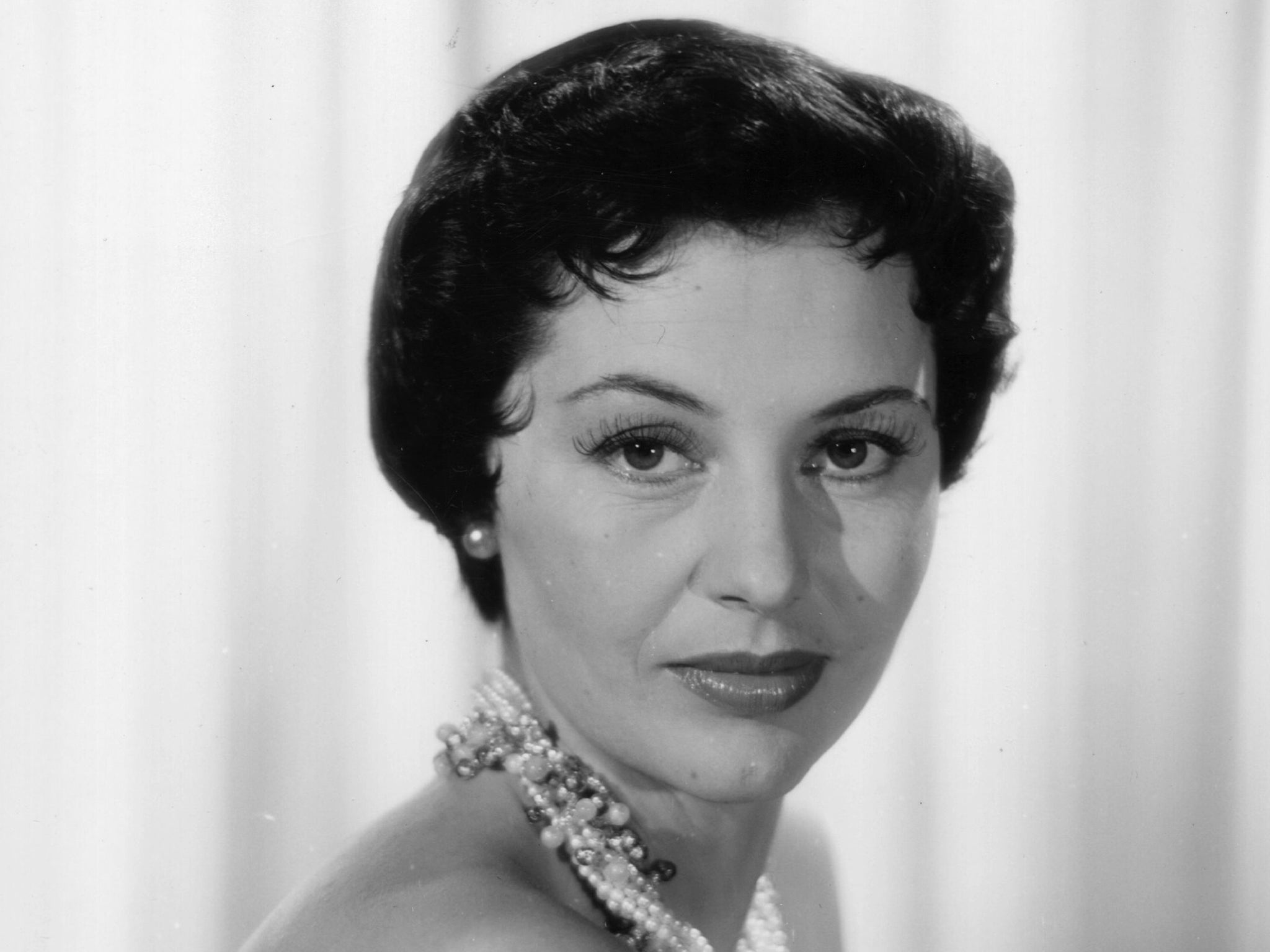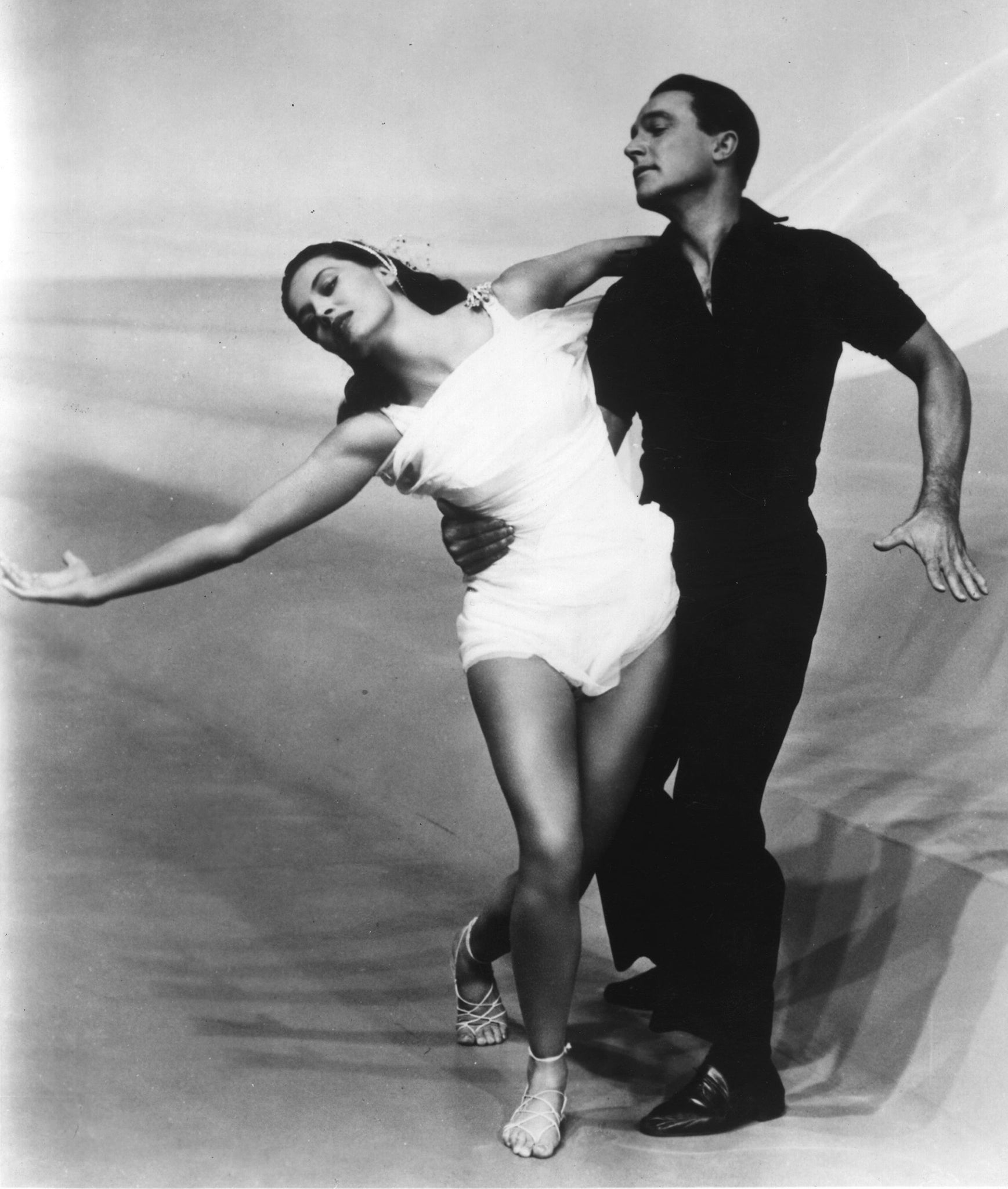A Life in Focus: Cyd Charisse, dancing star of Hollywood’s golden era
The Independent revisits the life of a notable figure. This week: Cyd Charisse, from 19 June 2008

Your support helps us to tell the story
From reproductive rights to climate change to Big Tech, The Independent is on the ground when the story is developing. Whether it's investigating the financials of Elon Musk's pro-Trump PAC or producing our latest documentary, 'The A Word', which shines a light on the American women fighting for reproductive rights, we know how important it is to parse out the facts from the messaging.
At such a critical moment in US history, we need reporters on the ground. Your donation allows us to keep sending journalists to speak to both sides of the story.
The Independent is trusted by Americans across the entire political spectrum. And unlike many other quality news outlets, we choose not to lock Americans out of our reporting and analysis with paywalls. We believe quality journalism should be available to everyone, paid for by those who can afford it.
Your support makes all the difference.Fred Astaire called her “beautiful dynamite”, and, when she was dancing, Cyd Charisse was a dynamic and alluring talent. One of the screen’s finest dancers, she became a legendary performer when she partnered Gene Kelly in the “Broadway Ballet” sequence of Singin’ in the Rain (1952) and went on to star with Kelly in Brigadoon (1955) and It’s Always Fair Weather (1955) and with Fred Astaire in The Band Wagon (1953) and Silk Stockings (1957) – comparing Astaire and Kelly, she diplomatically stated, “It’s like comparing apples and oranges – they’re both delicious.”
Long-legged, seductive and sexy, she was one of Hollywood’s iconic dancing stars, who can be mentioned with Eleanor Powell, Ann Miller and Vera-Ellen. Although she excelled in the balletic style, she could hoof with the best, as she demonstrated in her stunning gym dance, “Baby, You Knock Me Out”, in It’s Always Fair Weather, and her “Fated to be Mated” duet with Astaire in Silk Stockings. Her romantic pas de deux with Astaire in The Band Wagon to the tune of “Dancing in the Dark” is widely regarded as one of the most beautiful film dance duets.
The daughter of a jeweller, she was born Tula Ellice Finklea in Amarillo, Texas, in 1921. She studied ballet from the age of six, and at 13 she joined the Ballets Russes. Her little brother, unable to pronounce “Sis”, had called her “Sid”, and she kept the nickname for professional use, initially calling herself Felia Sidorova. In 1939, during a European tour, she married her ballet instructor Nico Charisse, with whom she danced in a film short, Rhumba Serenade (1941).
She appeared in five more short films before making her feature film debut in 1943, playing bit part roles in Mission to Moscow and Something to Shout About (under the name Lily Norwood). The choreographer Robert Alton saw her work and recommended her to MGM, who gave her a contract and the name Cyd Charisse. Alton became a champion of her talents, and brought her to the attention of the producer Arthur Freed, who gave her a small dancing role in the opening sequence of Ziegfeld Follies (shot in 1944 but released in 1946).
After a long period of grooming by the studio, Freed gave her a more substantial role in The Harvey Girls (1946). Though primarily a vehicle for Judy Garland, then at the height of her film fame, it gave Charisse the chance to do some balletic steps to the ballad “Wait and See” and to share with Garland and Virginia O’Brien a wistful number about unfulfilled hopes, “It’s a Great Big World”. Charisse was in fact nearly tone deaf, and in all her musicals her singing was dubbed.
In the Jerome Kern screen biography Till the Clouds Roll By (1947), Charisse danced briefly with Gower Champion, and her ballet skills were given major exposure for the first time in The Unfinished Dance (1947). In this remake of the French classic La Mort du Cygne, she is fan worshipped by a little girl (Margaret O’Brien) who tries to sabotage a performance by Charisse’s rival, with tragic results. While filming an exotic dance on a giant staircase for the Esther Williams vehicle On An Island With You (1948), Charisse fell and broke her leg, the accident causing her to drop out of Easter Parade (1948) – Ann Miller replaced her.

During these early years, MGM seemed unsure just how to use Charisse, casting her in several non-dancing roles in such films as East Side West Side (1949) and Tension (1950) in which she was merely competent. In the Rodgers and Hart biography, Words and Music (1948), she danced while Perry Como sang “Blue Room”, and she partnered Dee Turnell for a balletic treatment of “On Your Toes”. When the Frank Sinatra vehicle The Kissing Bandit (1949) was completed and deemed to be in need of some extra verve, “The Dance of Fury” was inserted, choreographed by Stanley Donen and featuring Charisse with Ricardo Montalban and Ann Miller in a rhythmically satirical display of fiery passion and jealousy that proved to be the highlight of the movie.
In 1947 Cyd Charisse divorced Nico, and the following year, after a serious affair with Howard Hughes, she married the singer Tony Martin, who had been married to Alice Faye. Tony Martin Jr was born in 1950, after which Charisse’s long-awaited chance to break through into screen stardom finally arrived, with her wordless role in Singin’ in the Rain (1952).
In the justly celebrated musical, directed by Gene Kelly and Stanley Donen, Charisse lit up the screen as, with a Louise Brooks black-fringe hairstyle, she vamped Gene Kelly to the surging strains of “Broadway Rhythm”, puffing on a long cigarette holder and provocatively wrapping her long legs around the bewitched Kelly, at one point dangling his hat on the toe of her vertical right leg. Charisse recalled, “As the camera panned up my legs and my body, I was supposed to exhale a drifting plume of smoke. I had never smoked and it took me a long time, plus a lot of coughing, before I got it right.” The result was, and is, a breathtaking piece of choreographic seduction, and established Charisse as a prime musical star.
She moved from Kelly to Astaire to star in Vincente Minnelli’s The Band Wagon (1953), in which a ballet sequence, “La Femme Rouge”, shows off Charisse’s classical training to good advantage. Two other musical sequences in The Band Wagon are among the finest ever – the romantic “Dancing in the Dark” and the climactic “Girl Hunt Ballet”, a scintillating pastiche of pulp fiction, with Astaire as a private detective, and Charisse in a dual role as two femmes fatales – a blonde who is less innocent than she looks, and a brunette of whom Astaire says, “She came at me in sections, more curves than a scenic railway. . . I wouldn’t trust her any further than I could throw her, but she was my kind of woman.” The bluesy Arthur Schwartz-Howard Dietz song from 1932, “Smokin’ Reefers” is used instrumentally to potent effect, and the number peaks with the two stars performing a raunchy night club duet.
She next starred with Kelly in Minnelli’s transcription of the Broadway musical Brigadoon (1954), which featured a lyrical romantic duet to “The Heather on the Hill” but suffered from artificial settings and a too-whimsical story. Not successful at the time, the film has acquired greater popularity over the years due to its lyricism and “love can conquer all” dictum.
Charisse was a guest star in the Sigmund Romberg biography Deep in my Heart (1954), performing with James Mitchell a sensuous dance duet to “One Alone”. Her next film, It’s Always Fair Weather (1955), should have been more successful than it was – Kelly and Charisse were joined by two other fine dancers, Michael Kidd and Dan Dailey, in this virtual sequel to On the Town, but a pervading melancholy (three ex-army pals meet after 10 years and find they’ve nothing in common) and pallid score worked against it. Though Charisse had her great dance number in the gymnasium, she had no duet with Kelly, several numbers having been left on the cutting room floor. Meet Me in Las Vegas (1956), which teamed her with Dan Dailey, was more genial, and included a spirited “Frankie and Johnny” ballet sequence in which she was partnered by John Brascia.
The last important film in Charisse’s career was Rouben Mamoulian’s Silk Stockings, a musical version of the Greta Garbo comedy classic Ninotchka. As the Russian official succumbing to the delights of Paris, Charisse was inevitably compared unfavourably with the Swedish superstar, but the film was a good showcase for her dancing. The melody of the title song prompts a beguiling solo in which she caresses the silks and satins of glamorous attire. To the strains of the hit song “All of You” she and Astaire glide sinuously around a hotel floor and the lively “Red Blues” is one of her most breathtaking numbers, a whirling display of tapping, high kicks and pirouettes.
Silk Stockings, made the same year as Astaire’s Funny Face, virtually marked the end of the golden era of Hollywood musicals. Not only Charisse, but other musical stars of the period, such as Gene Kelly, Ann Miller, Vera-Ellen and Jane Powell, had to take dramatic roles or turn to television or live performance to practice their art. Charisse starred in several non-musicals, playing a murderess in Twilight for the Gods (1958), a showgirl in Nicholas Ray’s Party Girl (1958), and an emasculating actress in Minnelli’s Two Weeks in Another Town (1962), and she took a guest role as a nightclub dancer and murder victim in The Silencers (1966).

Her limitations as an actress are particularly evident in the uncompleted film Something’s Gotta Give (1962), which was abandoned because of the studio’s problems with its star Marilyn Monroe. Some 25 minutes of shot footage was recently compiled into chronological sequence and shows Charisse putting in a truly inept comedy performance.
In 1963 she and Tony Martin formed a nightclub act, and in 1968 she took over from Melina Mercouri in the Broadway musical Illya Darling, based on the film Never on Sunday. She then took the show on a lengthy tour. She also appeared in the Melbourne production of No, No, Nanette in 1972.
In 1986 Charisse came to the UK to star at the Victoria Palace in a revival of Charlie Girl (1986), playing the role originated by Anna Neagle. Despite her vocal limitations, she managed to talk-sing her way through her numbers agreeably, she danced gracefully, and it was fun to see her duetting with the inimitable Dora Bryan. But the show’s time had passed and the revival’s run was modest.
In 1990 she produced an exercise video, “Easy Energy Shape Up”, aimed at active senior citizens, and in 1992 she found herself again following in the footsteps of Greta Garbo when she returned to Broadway to take over the role of the lovestruck ballet dancer in a musical version of Grand Hotel.
The memoir she and Martin wrote, The Two of Us, in 1976, is one of the most wildly inaccurate biographies ever printed (“In a thing called ‘Til the Clouds Roll By, I was the girl Perry Como sang to when he did ‘Blue Room’ ... I did Words and Music, the story of Sigmund Romberg’s life.”)
Fortunately the best of Cyd Charisse’s work will endure, for Singin’ in the Rain and The Band Wagon will continue to be shown and admired as long as classic films are appreciated.
Tula Ellice Finklea (Cyd Charisse), dancer and actor, born 8 March 1921, died 17 June 2008
Join our commenting forum
Join thought-provoking conversations, follow other Independent readers and see their replies
Comments